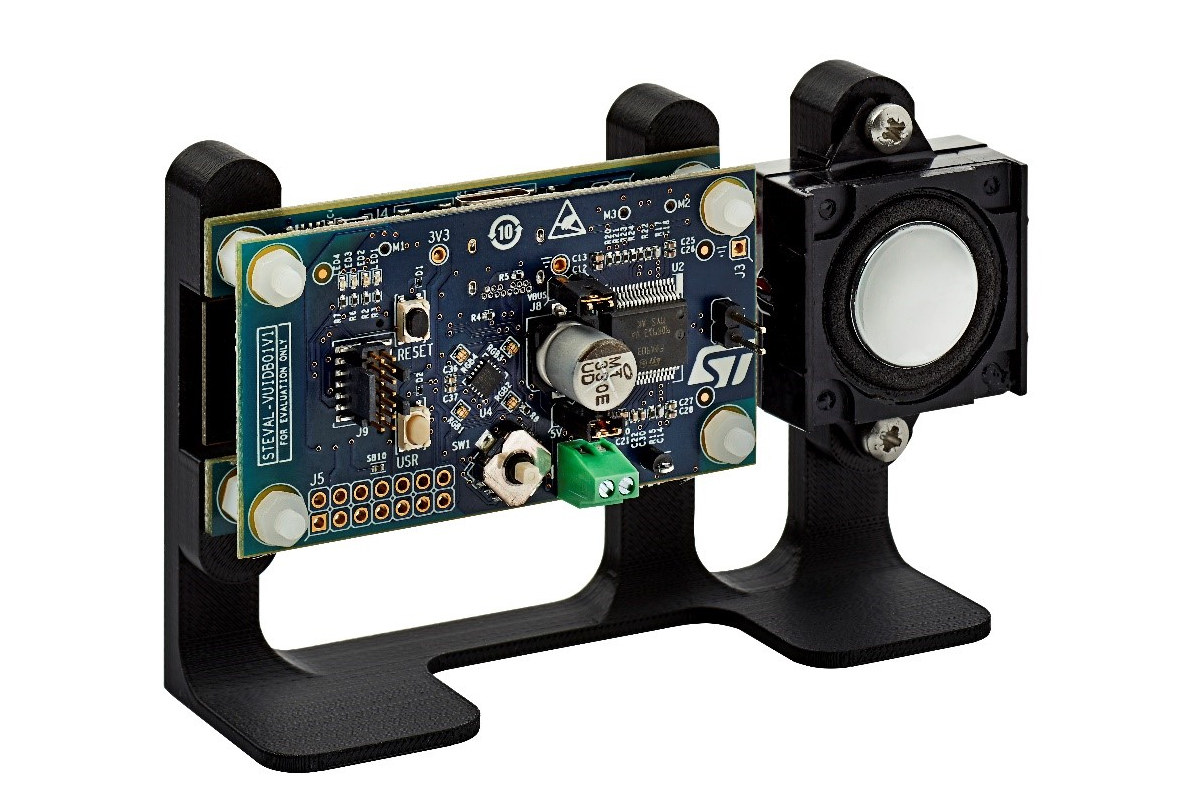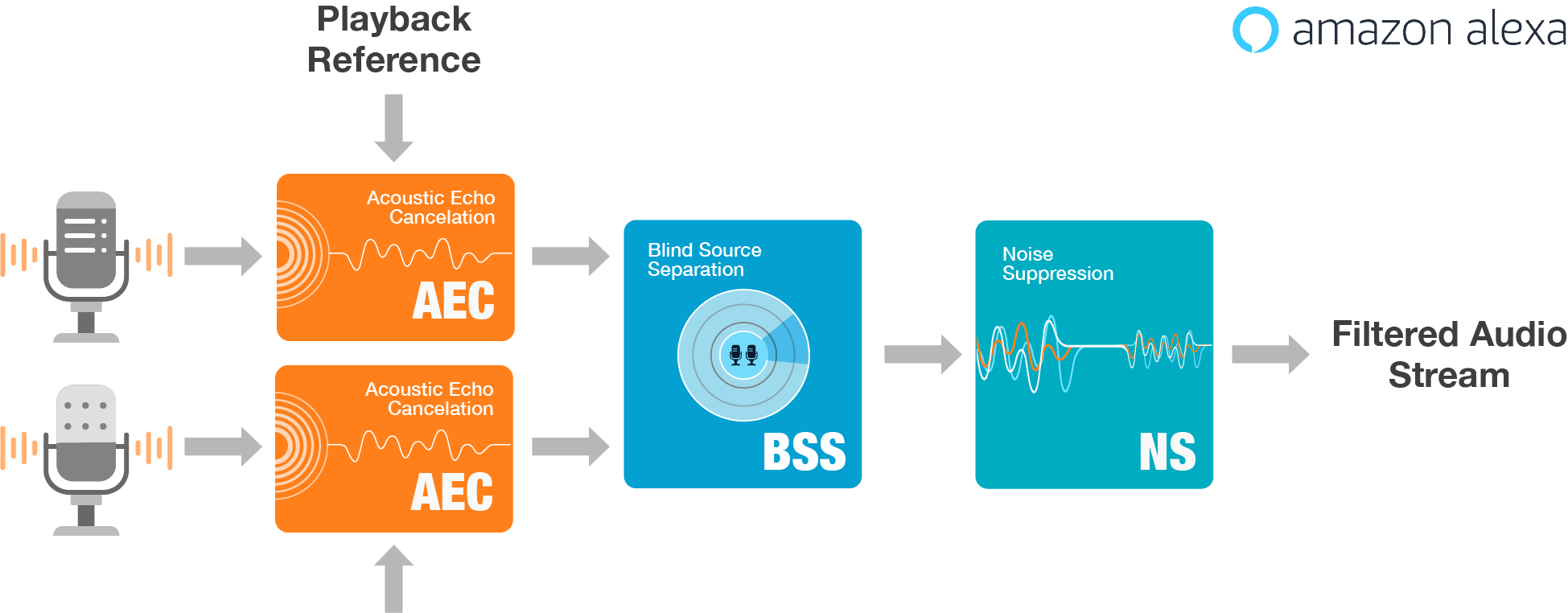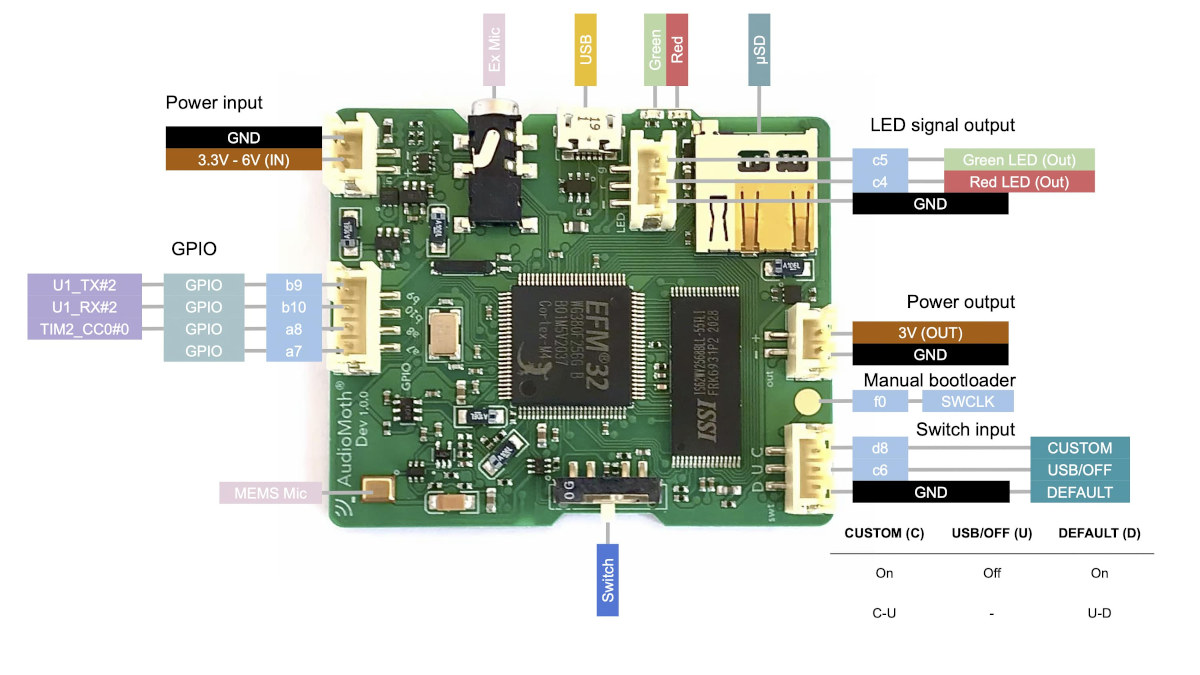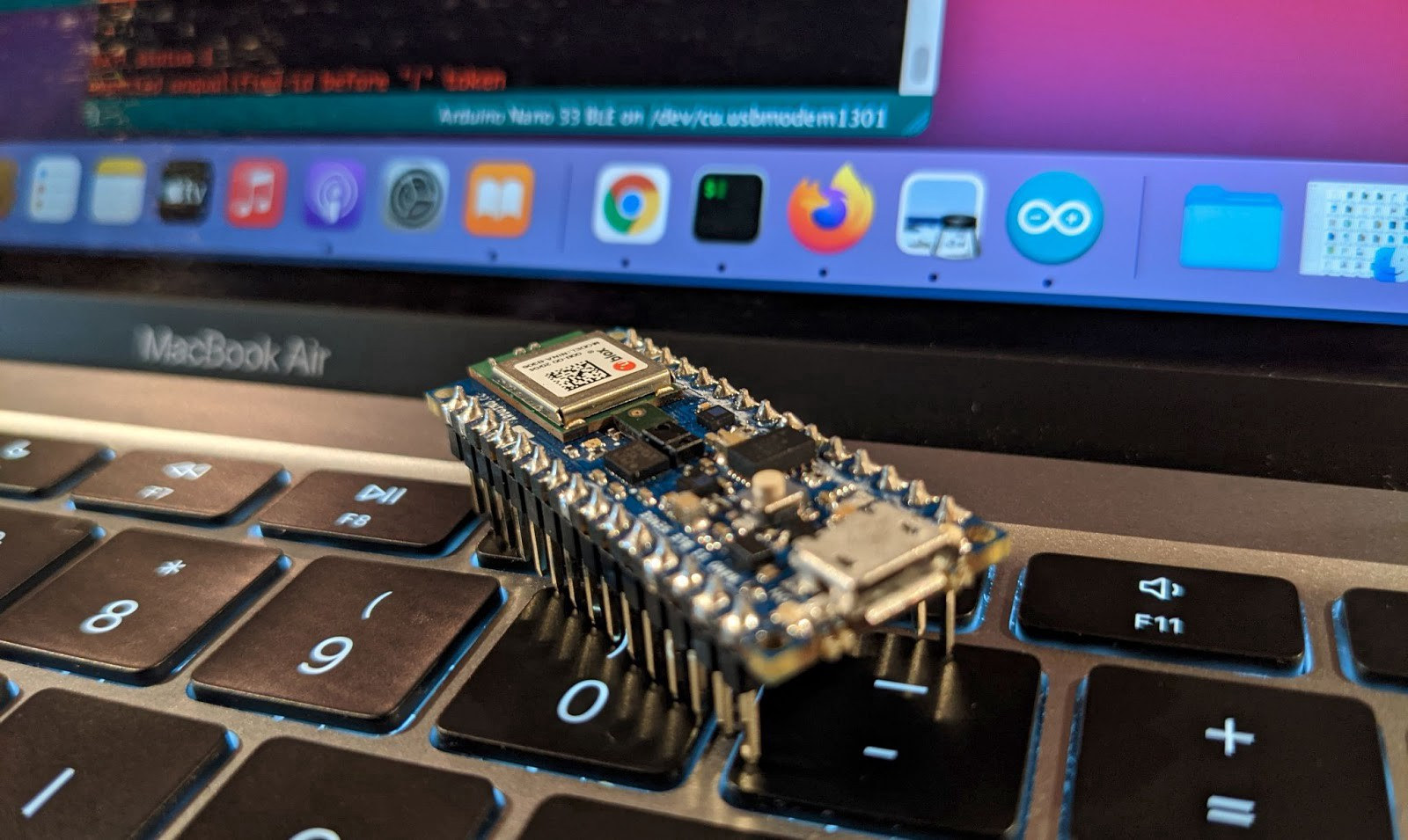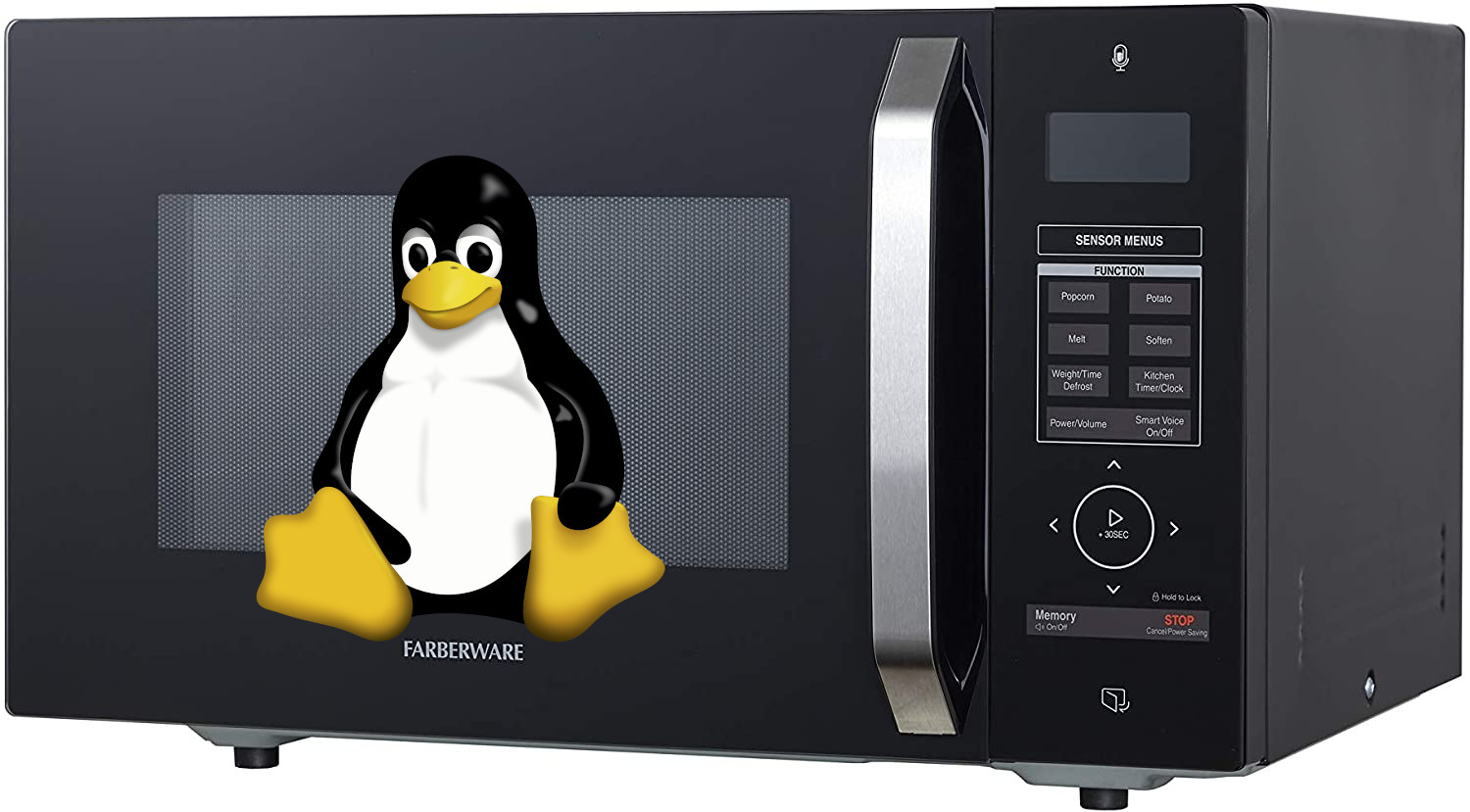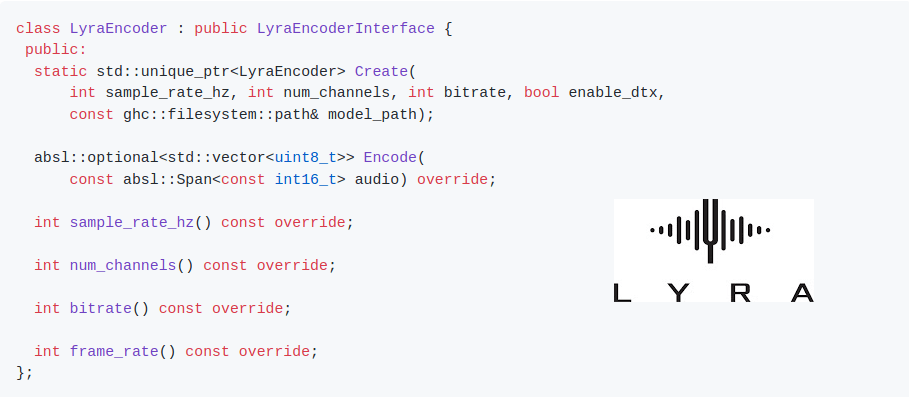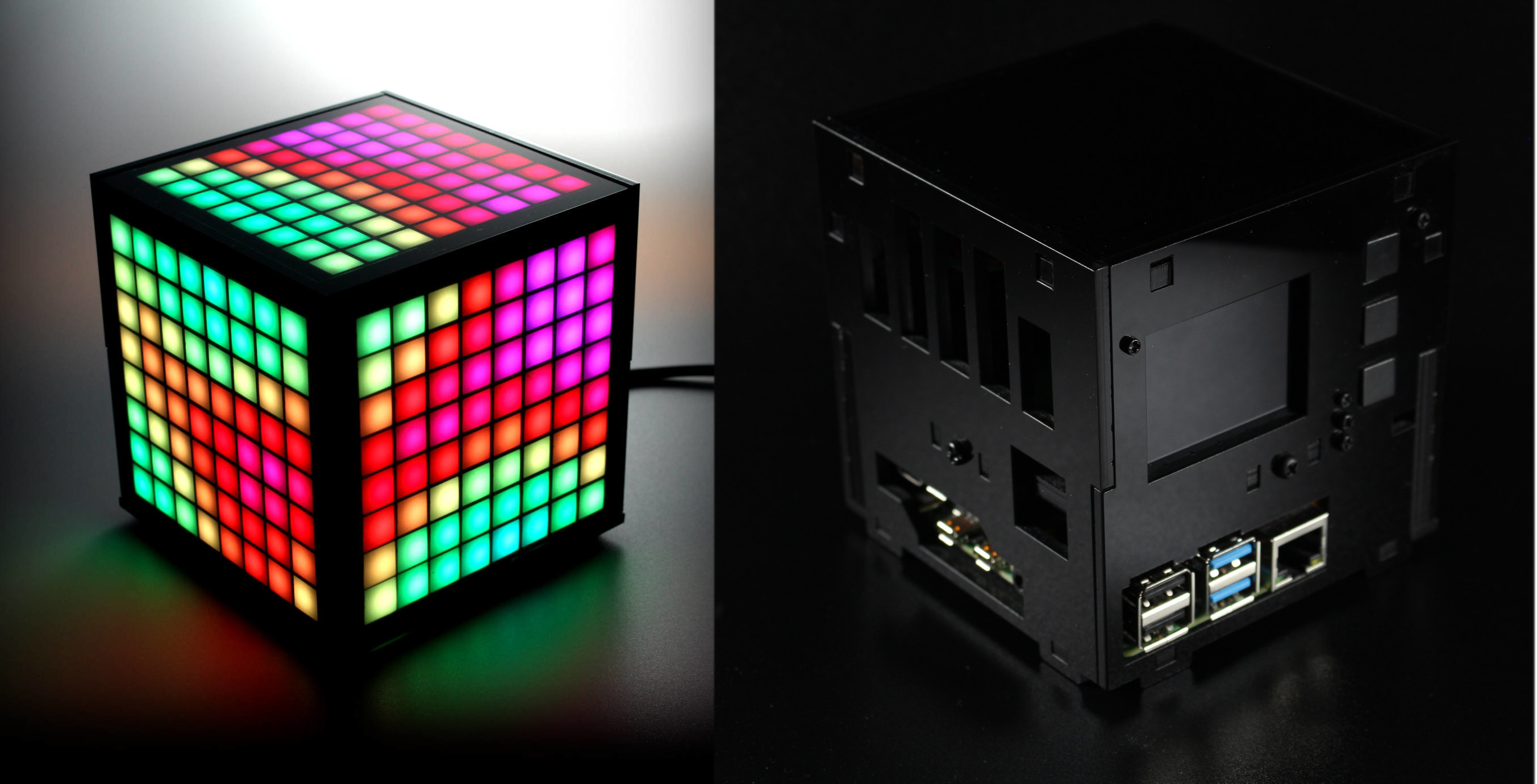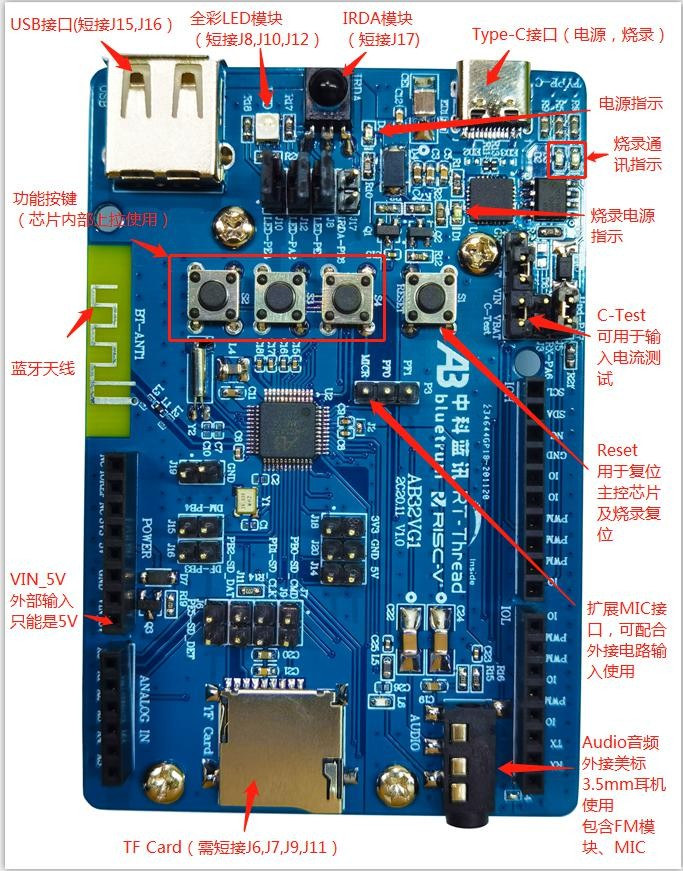We’ve already covered plenty of Amazon-qualified development kits working with Alexa Voice Services. But here’s another one with STEVAL-VOICE-UI evaluation kit making it to the list of Smart Home Dev Kits, which Amazon describes as “reference designs for creating smart home products such as light switches, thermostats, or Wi-Fi routers”. STEVAL-VOICE-UI voice user interface (VUI) evaluation kit features an STMicro STM32H7 Arm Cortex-M7 microcontroller with 2 MB embedded flash, 1 MB embedded SRAM, 2.4 GHz Wi-Fi, and a microphone array with three MEMS microphones, as well as a loudspeaker, and some buttons and LEDs. STEVAL-VOICE-UI key features specifications: Microcontroller – STMicro STM32H753VIT6E Cortex-M7 MCU @ up to 550 MHz with 2 MB flash, 1 MB SRAM Connectivity – 2.4 GHz Wi-Fi subsystem (Murata 1DX module) coupled to 2MB NOR flash (ISSI IS25LP016D) Audio 3x MP23DB01HP MEMS microphones with 36 and 30 mm spacing FDA903D class D digital input automotive audio […]
Amazon Alexa certified ESP AFE leverages ESP32-S3 AI & DSP instructions
While most Amazon Alexa certified products are hardware designs, Amazon website also includes a Software Audio Front End (AFE) Dev Kits section that lists software algorithms that optimize audio detection in noisy environments, and the latest addition is Espressif’s Audio Front-End algorithms, or ESP AFE for shorts, that have recently been qualified for Amazon Alexa devices. It’s not the first Alexa certified solution from Espressif Systems, as both companies have worked together in the past with audio products like the ESP32-PICO-V3-ZERO Alexa Connect Kit Module or ESP32-Vaquita-DSPG board The algorithms were created by Espressif’s AI Lab team who used the AI and DSP instructions inside ESP32-S3 processor to optimize the code. The algorithms only utilized 12 to 20% of the CPU, as well as 220 KB of internal and 240 KB of external memory, leaving extra resources for other applications running in the wireless SoC. The ESP AFE is said […]
AudioMoth Dev is a full-spectrum acoustic development board based on SiLabs EFM32 MCU
AudioMoth is a low-cost, open-source acoustic monitoring device that can record uncompressed audio from 8000 up to 384,000 samples per second onto a microSD card. With sensitivity to audible sounds as well as ultrasonic frequency range, It is mostly used for monitoring wildlife including bats, cicadas, the rainforest, etc… The manufacturer, Open Acoustic Devices, is now offering the development board version with AudioMoth Dev, based on a Silicon Labs EFM32 Wonder Gecko MCU like the full device, for $79.99 + shipping on GrougGets. AudioMoth Dev board specifications: Wireless microcontroller – Silicon Labs EFM32 Wonder Gecko Cortex-M4F MCU @ 48MHz with 256kB Flash, 32kB RAM External RAM – 256kB SRAM Storage – MicroSD card slot Audio capture On-board analog MEMS microphone, sensitivity -38 dBV/Pa, 63 dBA SNR, 10Hz to 192kHz Sample rates up to 384kHz 3.5 mm jack socket for external electret condenser microphones (Note: the optional case not compatible when […]
Picovoice offline Voice AI engine now works on Arduino
Last year, I wrote about Picovoice support for Raspberry Pi enabling custom wake-word and offline voice recognition to control the board with voice commands without relying on the cloud. They used ReSpeaker 4-mic array HAT to add four “ears” to the Raspberry Pi SBC. I also tried to generate a custom wake-word using the “Picovoice Console” web interface, and I was able to use “Dear Master” within a few minutes on my computer. No need to provide thousands of samples, or wait weeks before getting a custom wake-word. It’s free for personal projects. But the company has now added Picovoice to Arduino, or more exactly Arduino Nano 33 BLE Sense powered by a Nordic Semi nRF52480 Arm Cortex-M4F microcontroller, and already equipped with a digital microphone, so no additional hardware is required for audio capture. To get started, you’d just need to install the Picovoice Arduino library, load the sample […]
Microwave oven runs Linux on Rockchip RK3308 for voice control
Linux is everywhere, even on Mars, but if there’s one home appliance I did not expect to find the open-source operating system, it would have been the microwave oven. But Farberware thinks differently and launched the FM11VABK microwave oven running Linux on a Rockchip RK3308 quad-core Cortex-A35 processor to handle Sensory’s TrulyHandsfree voice stack enable voice-assistant features on the Linux microwave oven. I don’t think I need to go through the full specs of the 1,100 Watts microwave oven and I’ll focus on the voice assistant instead. People who worry about connecting everything to the Internet will be glad to know Farberware FM11VABK does not require an Internet connection or a mobile app for control. Everything is processed locally through TrulyHandsfree technology without sacrificing privacy, and with faster response times. Sensory offers its “Custom Domain-Specific Voice Assistant” service to any manufacturers of home appliances, vehicle infotainment systems, set-top boxes, home […]
Google releases the source code for Lyra low bitrate speech codec
Google showcased Lyra audio codec for high-quality voice calls at a low 3 kbps bitrate last February. But at the time, it was only for our eyes to see, or rather our ears to listen to, as the company did not release any software, but only audio samples with excellent quality compared to Speex @ 3 kbps or Opus @ 6 kbps. Google has now released the Lyra source code, written in C++ for optimal speed, efficiency, and interoperability and relying on both the Bazel build framework and the GoogleTest framework. The beta release provides the tools and APIs needed for Lyra encoding and decoding, and is currently optimized for the 64-bit Arm Android platform, but can also be run in Linux x86 64-bit. There is also an example app – lyra_android_example – that integrates with the Android NDK and offers a minimal GUI with two buttons to either record […]
Raspberry Pi case embeds 192 programmable LEDs, speaker, microphone, and sensors (Crowdfunding)
Most Raspberry Pi enclosures are designed to protect your board from dust, provide easy access to ports, and in other cases, ease the installation of hard drives or SSDs. But Abstract Foundry’s LumiCube does much more, and just calling it a case or enclosure is an understatement, as while it does house a Raspberry Pi, it also comes with 192 programmable LEDs placed over 3 panels, a speaker, a microphone, as well as several optional motion & environmental sensors, and a small 2-inch LCD display. LumiCube specifications: Acrylic base 3x RGB LED panels with 64 programmable LEDs each Audio – 2W speaker and microphone Display (optional) – 2-inch 320×240 IPS screen for system parameters or other info (e.g. sensor data) or images. Note that it can now show the Raspberry Pi desktop Sensors (optional) – Light & gesture sensor, BME280 temperature, humidity and pressure sensor, BNO055 IMU (accelerator and tilt […]
Bluetrum AB32VG1 board features AB5301A Bluetooth RISC-V MCU, runs RT-Thread RTOS
Bluetrum, a Shenzhen-based fabless company focusing on audio chips, has designed the AB32VG1 board based on its AB5301A Bluetooth RISC-V MCU for general-purpose and audio applications. The board comes with a MicroSD card, a USB port, a 3.5mm audio jack, and Arduino UNO compatible headers for easy prototyping. Bluetrum AB32VG1 board preliminary specifications: MCU – Bluetrum AB5301A RISC-V MCU @ 120 MHz (overclockable to 192 MHz) with 192KB RAM, 1MB flash, Bluetooth 5.0 connectivity and FM radio; LQFP48 package Storage – MicroSD card slot Audio – 3.5mm audio jack, 3-pin microphone header Connectivity – Bluetooth 5.0 with PCB antenna USB – USB 2.0 host port, USB Type-C port for power and programming Expansion – Arduino UNO header with 1x I2C, 6x ADC, 6x PWM Misc – IR receiver, 3x user buttons, 1x reset button, RGB LED, power LED, status LEDs, various configuration jumper Power Supply – 5V via USB Type-C […]


